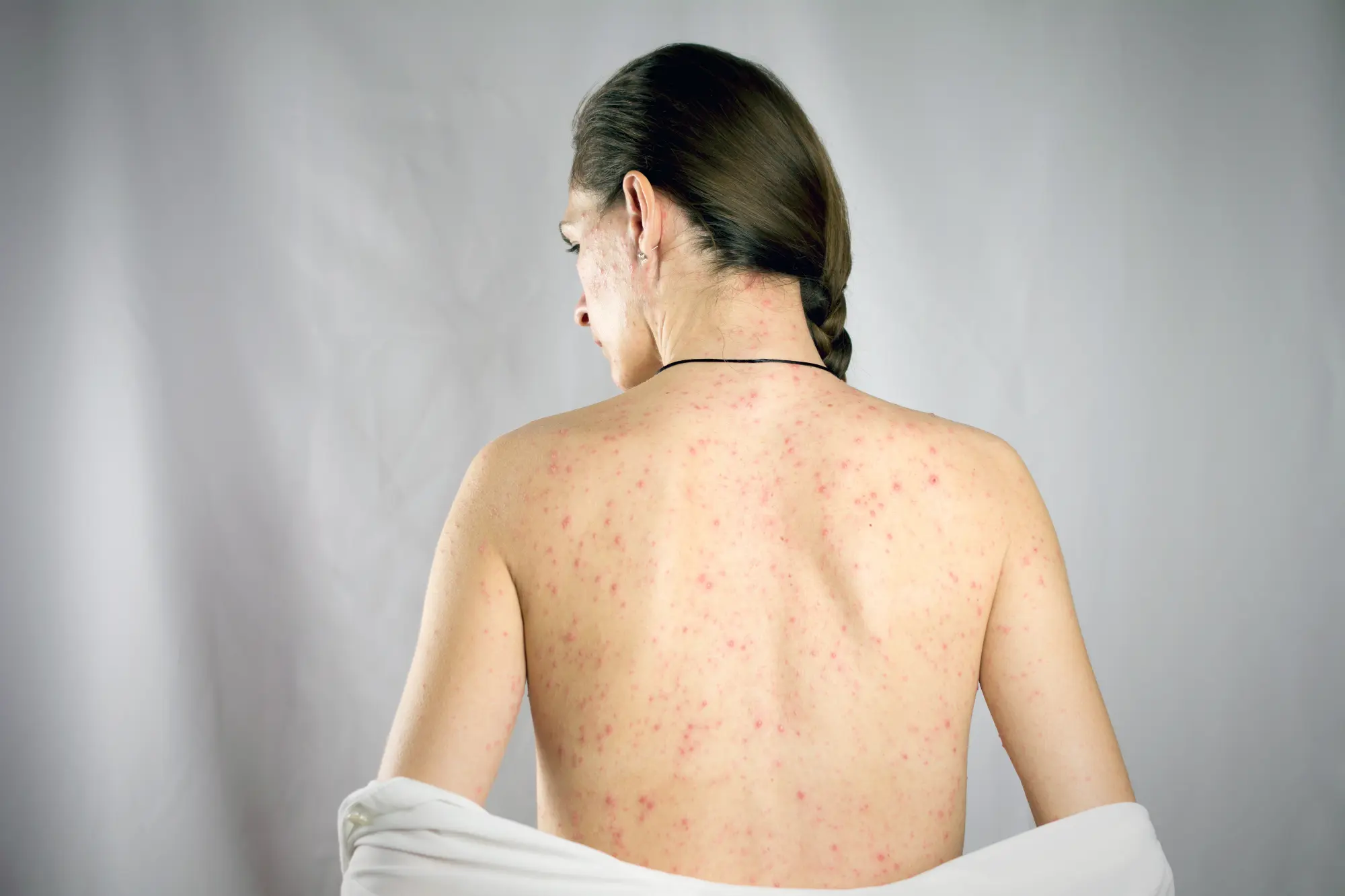
Contact Dermatitis
- Home
- Contact Dermatitis
Contact Dermatitis & Patch Testing in Terre Haute, IN
Understanding Contact Dermatitis
Contact dermatitis is a skin reaction that occurs when the skin comes into direct contact with an irritant or allergen. It can cause redness, itching, swelling, and discomfort. While not contagious, it can be persistent and difficult to manage without identifying the underlying trigger.
Common Symptoms of Contact Dermatitis
Symptoms typically appear within hours or days of exposure and may include:
- Redness, rash, or discoloration
- Itching or burning sensation
- Swelling
- Bumps or blisters that may ooze or crust over
- Dry, cracked, or scaly skin
These reactions can last for days or weeks, depending on the exposure's severity and treatment's effectiveness.
What Causes Contact Dermatitis?
Many everyday substances can trigger contact dermatitis. Some of the most common causes include:
- Skincare products, cosmetics, and fragrances
- Soaps, detergents, and cleaning products
- Dyes and preservatives in fabrics or personal care items
- Certain metals, such as nickel in jewelry
- Rubber, latex, and adhesives
- Plants like poison ivy or sumac
- Medications, including some topical antibiotics
Some people may develop an allergic reaction after repeated exposure to these substances, while others react the first time they come into contact with them.
Patch Testing for Contact Dermatitis
Patch testing is the most effective way to identify allergens causing contact dermatitis. Unlike skin prick tests used for respiratory or food allergies, patch testing is designed to detect delayed allergic reactions from substances that come into contact with the skin.
At Biltmore Dermatology, we offer patch testing to help patients determine which substances trigger their symptoms.
How Patch Testing Works
Patch testing is a multi-step process that takes place over three visits within one week:
- First Visit – Small amounts of potential allergens are applied to the skin using adhesive patches in an organized grid. These patches remain in place for 48 hours.
- Second Visit – The patches are removed, and an initial evaluation is conducted to check for early reactions.
- Third Visit – A final assessment is completed to detect delayed reactions, ensuring a thorough and accurate diagnosis.
The process is safe and painless, though mild itching or redness may occur at the test sites. Identifying triggers through patch testing allows for more effective long-term management of contact dermatitis.
Managing Contact Dermatitis
Once triggers have been identified, the best course of action is to avoid exposure and manage symptoms through a combination of treatments, including:
- Using fragrance-free and hypoallergenic skincare products
- Applying prescription or over-the-counter anti-itch creams
- Taking antihistamines for allergic reactions
- Using topical corticosteroids for inflammation
- Practicing good skin care to restore the skin barrier
For severe or persistent cases, our dermatology team will create a customized treatment plan based on your specific allergens and skin condition.
Schedule Your Consultation Today
If you are experiencing persistent skin irritation or suspect you have contact dermatitis, contact Biltmore Dermatology to schedule a consultation at our Terre Haute or Vincennes office and begin your journey to clearer, healthier skin.